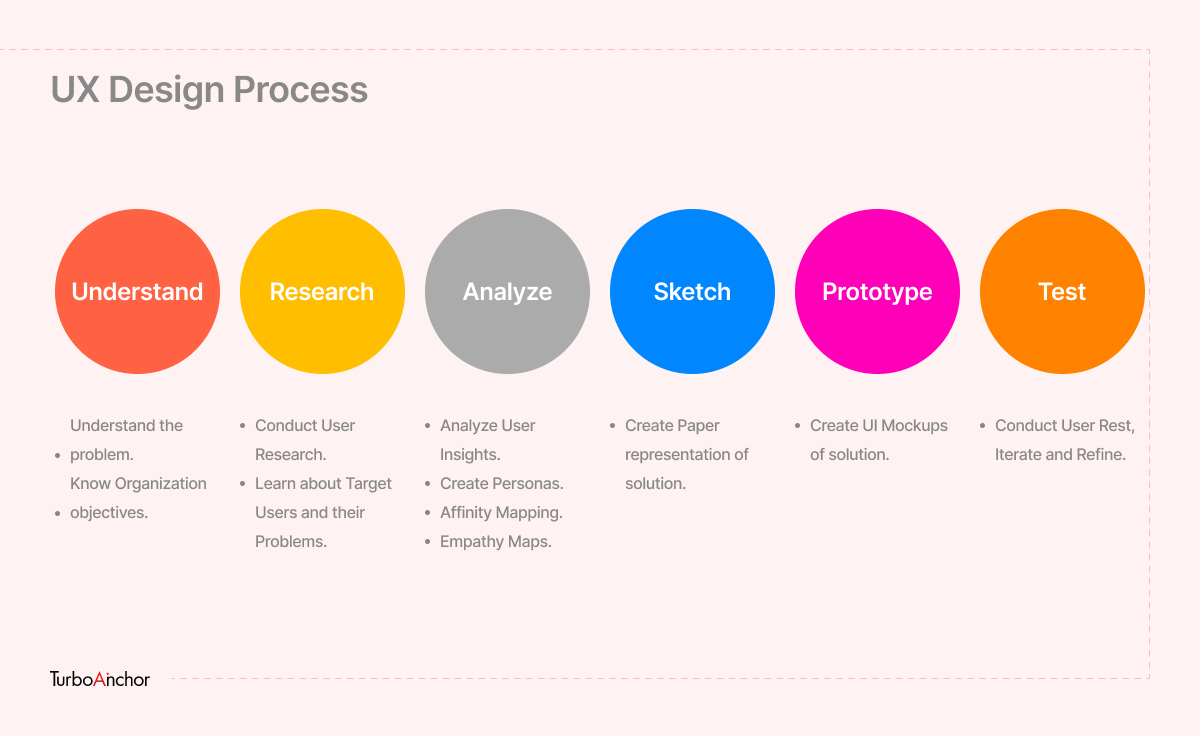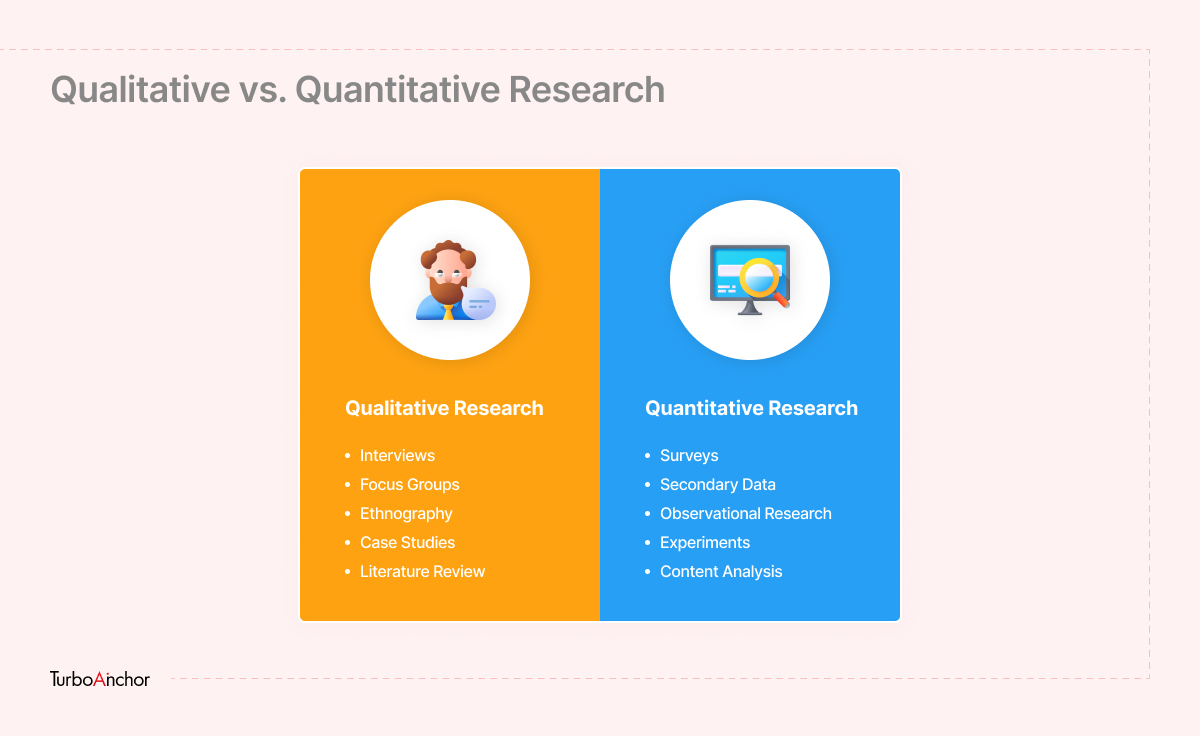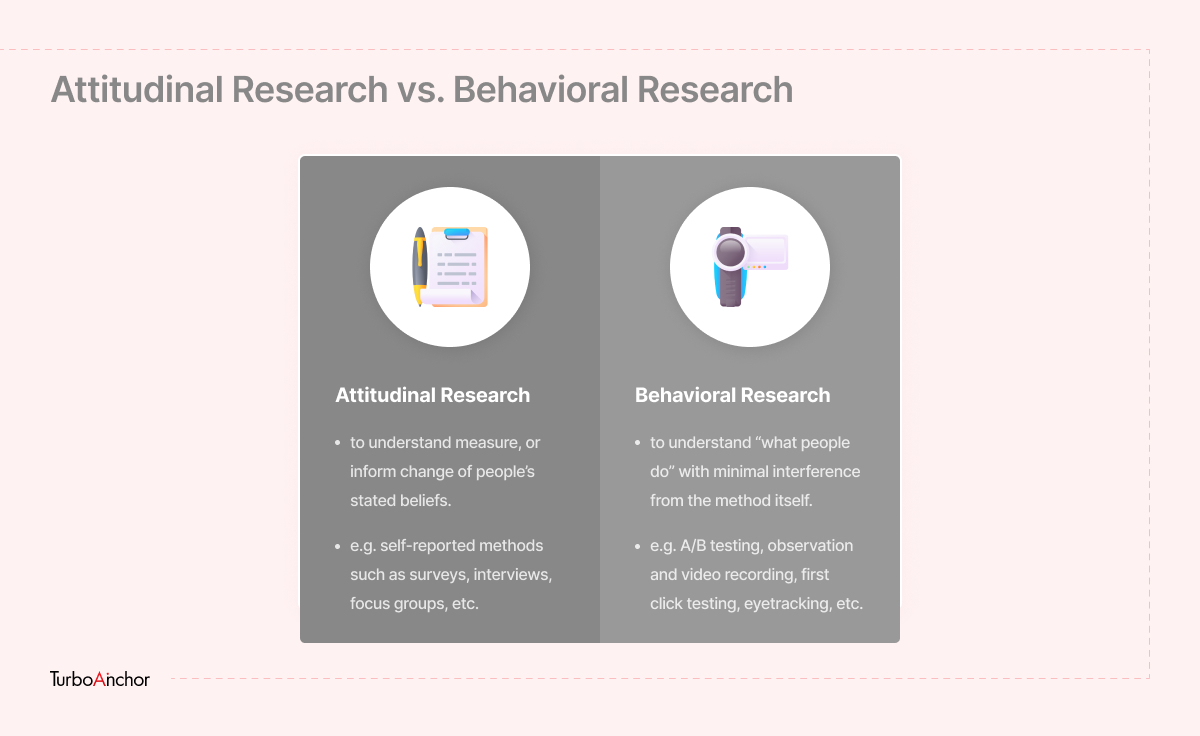To develop products that can meet users’ needs (and captivate them as well), you first have to determine who your user is and what their needs are. That’s where user experience (UX) research comes in. UX researchers thoroughly research target users to collect and interpret data that assist inform the product design process.
So for more in-depth knowledge, let’s take a closer look at what is UX research is,
UX research is learning about target users, product needs, and wants, then using those insights to enhance the design process. UX researchers follow different methods to discover problems & design opportunities. It’s all about finding insights to direct successful design. As discussed above, when you conduct UX research, you can provide the best solutions as you know what they need. It can be applied at any stage of the design process.
This research consists of two phases:
- Collecting data
- Analyzing data

At the start of any project, design research is concentrated on learning about project requirements from end users and their needs and goals. Then Interviews, surveys, and observations of prospects and current users are all conducted by researchers. As the design process unfolds, the research focus moves from usability & view. Usability tests or A/B tests may be conducted, as well as user interviews and testing of assumptions to enhance designs.
Types of User research:
Following are the two main types of User research
- Quantitative Research
- Qualitative Research

Quantitative Research
It’s any research that focuses on numbers and statistics. Quantitative research includes more structured methods like various forms of online surveys, questionnaire surveys, mobile surveys, online polls, and analytics tools to collect measurable data. This data in terms of usability consists of measuring how many people clicked on the CTA button or visited the website, how long it takes an average user to complete a task, How many users successfully accomplished the task, and how many errors they encountered in their way. It is most useful when you have something to compare them to, whether it be a previous design or a product from a competitor.
Qualitative Research
In contrast to quantitative research, this type of research examines non-numerical insights. It answers questions like why users had trouble accomplishing a task or how to fix a problem. Research is conducted in the form of interviews or discussions, or usability tests. When it comes to such research, it’s a smart move to be careful because it doesn’t involve numerical data. So, therefore, there’s a risk that your opinions will influence the results.
Another difference between types of research is behavioral and attitudinal research.
Behavioral Research vs Attitudinal Research

Attitudinal Research:
This sort of research method involves a one on one interview about your potential product or user’s feelings and attitudes toward a certain experience.
For example, Suppose asking a customer What do you think of this product or service?
What do they like or dislike about it?
Behavioral Research:
Behavioral research involves methods like observation studies that include what users do.
For example, Observing a user interacting with a navigational app and learning from their behavior.
UX Research Methods
Interviews
Interviews conducted live or face-to-face give a concise and easy method to gain insight into what a user wants from a potential product or gather qualitative data about an existing product. An interviewer can ask questions that unfold details related to the user’s approach and interest. Also, these interviews can be conducted as a focus group consisting of one or more persons.
Online Surveys
Online surveys or questionnaires are designed to target the audience online by a form. These surveys let you identify your users to gain qualitative and quantitative insights. These surveys help you keep track of your customer interests & feedback related to the product.
Usability Testing
Usability testing is one of the best conducting UX research. While you observe, participants complete a task with a product. You can use this to determine how successful users are, how quickly they complete a task if they encounter problems, and how satisfied they are with the outcome.
Diary Studies:
A diary study gathers qualitative information by having participants write about their everyday lives in a log, diary, or journal about a particular experience or activity. By doing this, you gain an understanding of their experiences and behaviors.
Card Sorting:
Card sorting is a method in which study participants organize topics into groups that make the most sense to them and create labels for them. It is useful information for designing apps and websites that are more intuitive and easy to guide.
FAQs
What is the role of a UX researcher?
A UX researcher is responsible for the following roles:
- Identify users’ behaviors
- Needs
- Make products, services, and websites more useful and enjoyable
What are the types of research in UX?
Following are the types of research in UX:
- Qualitative Research
- Quantitative Research
- Attitudinal Research
- Behavioral Research
- Generative Research
- Evaluation research
Why do we need UX research?
UX research allows you to create an essential foundation for design strategy. It helps you to create an optimal product for users. Most importantly, you’ll have the data to reinforce your strategy and design decisions. User research also helps you identify potential users who would go for your product.
Conclusion
In the end, we can say when it comes to UX research; it provides you with an excellent introduction to user experience and insight related to the product. In both qualitative and quantitative forms. So in simple words UX is subjective the experience that a person goes through while using a product.
Therefore, it is necessary to understand the needs and goals of potential users, the context, and their unique tasks for each product. By selecting proper UX research methods and applying them precisely, designers can shape a product’s design and develop products that serve customers and businesses more effectively.
Also Read:
- What is UI UX Design? Difference Between UI & UX
- Introduction to User Interface Design
- Image Background Remover in Photoshop and Other Tools